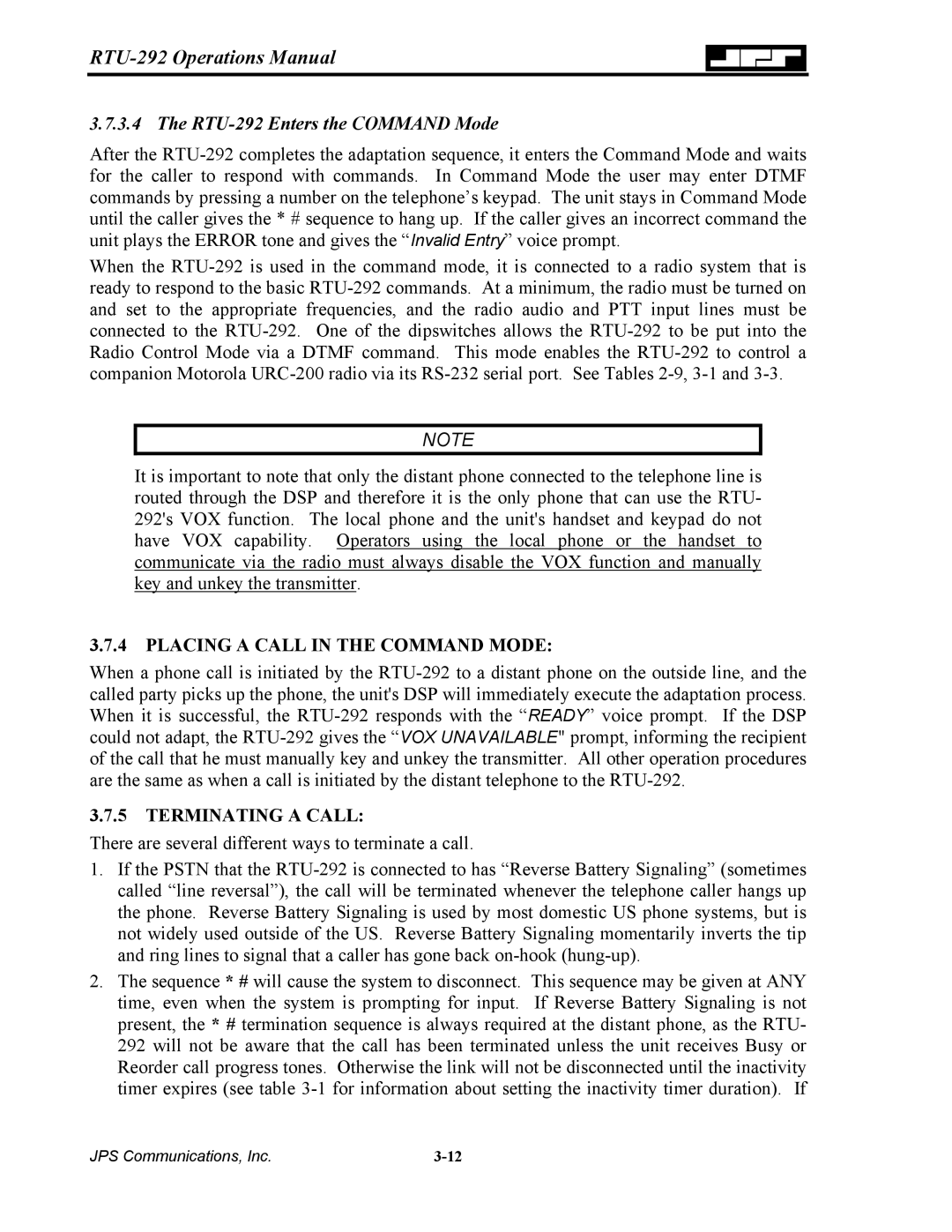3.7.3.4 The RTU-292 Enters the COMMAND Mode
After the RTU-292 completes the adaptation sequence, it enters the Command Mode and waits for the caller to respond with commands. In Command Mode the user may enter DTMF commands by pressing a number on the telephone’s keypad. The unit stays in Command Mode until the caller gives the * # sequence to hang up. If the caller gives an incorrect command the unit plays the ERROR tone and gives the “Invalid Entry” voice prompt.
When the RTU-292 is used in the command mode, it is connected to a radio system that is ready to respond to the basic RTU-292 commands. At a minimum, the radio must be turned on and set to the appropriate frequencies, and the radio audio and PTT input lines must be connected to the RTU-292. One of the dipswitches allows the RTU-292 to be put into the Radio Control Mode via a DTMF command. This mode enables the RTU-292 to control a companion Motorola URC-200 radio via its RS-232 serial port. See Tables 2-9, 3-1 and 3-3.
NOTE
It is important to note that only the distant phone connected to the telephone line is routed through the DSP and therefore it is the only phone that can use the RTU- 292's VOX function. The local phone and the unit's handset and keypad do not have VOX capability. Operators using the local phone or the handset to communicate via the radio must always disable the VOX function and manually key and unkey the transmitter.
3.7.4 PLACING A CALL IN THE COMMAND MODE:
When a phone call is initiated by the RTU-292 to a distant phone on the outside line, and the called party picks up the phone, the unit's DSP will immediately execute the adaptation process. When it is successful, the RTU-292 responds with the “READY” voice prompt. If the DSP could not adapt, the RTU-292 gives the “VOX UNAVAILABLE" prompt, informing the recipient of the call that he must manually key and unkey the transmitter. All other operation procedures are the same as when a call is initiated by the distant telephone to the RTU-292.
3.7.5 TERMINATING A CALL:
There are several different ways to terminate a call.
1.If the PSTN that the RTU-292 is connected to has “Reverse Battery Signaling” (sometimes called “line reversal”), the call will be terminated whenever the telephone caller hangs up the phone. Reverse Battery Signaling is used by most domestic US phone systems, but is not widely used outside of the US. Reverse Battery Signaling momentarily inverts the tip and ring lines to signal that a caller has gone back on-hook (hung-up).
2.The sequence * # will cause the system to disconnect. This sequence may be given at ANY time, even when the system is prompting for input. If Reverse Battery Signaling is not present, the * # termination sequence is always required at the distant phone, as the RTU- 292 will not be aware that the call has been terminated unless the unit receives Busy or Reorder call progress tones. Otherwise the link will not be disconnected until the inactivity timer expires (see table 3-1 for information about setting the inactivity timer duration). If

